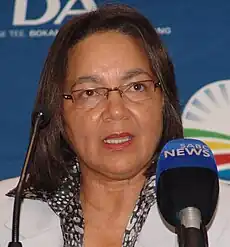| Cabinet of South Africa | |
|---|---|
.svg.png.webp) | |
| Overview | |
| Established | 1910 |
| Country | South Africa |
| Leader | President |
| Appointed by | Cyril Ramaphosa |
| Ministries | 30 |
| Responsible to | National Assembly |
.svg.png.webp) |
|---|
|
|
The Cabinet of South Africa is the most senior level of the executive branch of the Government of South Africa. It is made up of the president, the deputy president, and the ministers.[1]
Overview
The president appoints the deputy president and ministers; assigns their powers and functions, and may dismiss them. The president may select any number of ministers from the members of the National Assembly, and may select no more than two ministers from outside the assembly. As of 2023 Cooperative Governance and Traditional Affairs Minister Thembi Nkadimeng and Electricity Minister Kgosientso Ramokgopa are the two cabinet ministers who are not members of the National Assembly. While deputy ministers are not members of the cabinet, they are required to assist relevant ministers in the execution of their duties.
A member of the Cabinet is appointed by the president to be the leader of government business in the National Assembly.[2]
History
On 31 May 1910, former Boer military general and the former prime minister of the Transvaal Colony Louis Botha became the first prime minister of the newly established Union of South Africa—the forerunner of the modern South African state. He appointed the first cabinet of the Union of South Africa after the general election held on 15 September 1910. It consisted of members of the now-defunct South African Party.[3] For the next fourteen years, it only consisted of members of the SAP. Botha died in 1919 and was replaced with another Boer general and SAP member, Jan Smuts.[4]
In 1924, J. B. M. Hertzog of the National Party became prime minister through a coalition with the Labour Party and appointed a cabinet that consisted of National Party and Labour Party members. In 1934, the Hertzog's National Party and the South African Party merged to form the United Party.[5] Hertzog won the 1938 general election, but in 1939 the United Party was divided between supporters of Hertzog and those of his Justice Minister Jan Smuts because of the question of South Africa's role in the Second World War. Hertzog was voted out in the United Party and resigned as prime minister, which allowed Jan Smuts to form a government in coalition with the Dominion Party and the Labour Party.[6] The 1948 general election was won outright by D. F. Malan's Herenigde Nasionale Party and Malan appointed his first cabinet composed of National Party members. For the next forty-six years, South Africa would be governed by the National Party.
On 31 May 1961, South Africa became a republic and Queen Elizabeth II was replaced as head of state with a state president with largely ceremonial powers.[7] The Prime Minister was still head of government and appointed/dismissed members of the cabinet. In 1984, the constitution was amended and the office of prime minister was abolished while the office of state president was given more responsibilities. State president P. W. Botha was now the head of state and head of government.[8] In the 1984 tricameral parliamentary elections, Allan Hendrickse's Labour Party won a majority of seats in the coloured House of Representatives, while Amichand Rajbansi's National People's Party won a plurality of seats in the Indian House of Delegates.[9] Hendrickse and Rajbansi were appointed to serve in Botha's second cabinet as Minister of Coloureds' Affairs and Minister of Indian Affairs, respectively, becoming the first non-white members of the South African cabinet.
In 1989, Rina Venter became the first woman to hold a cabinet post in South African history.[10] Following the end of apartheid and the first multi-racial elections in 1994, Nelson Mandela became the first black president of South Africa and appointed a Government of National Unity consisting of African National Congress, National Party, and Inkatha Freedom Party members. In 1996, the National Party withdrew from the GNU and the cabinet's composition has been dominated by ANC members since then. The Inkatha Freedom Party continued to hold seats in the government, as minority partners, until the elections of 2004. In 2014, Lynne Brown became the first openly LGBT person to serve as a cabinet minister in South Africa and Africa.[11]
In 2019, President Cyril Ramaphosa appointed the first gender-balanced cabinet in South African history.[12]
Members of the current cabinet
Cyril Ramaphosa was appointed president of South Africa by parliament on 15 February 2018.[13] On 26 February, he announced a major Cabinet reshuffle, including the appointment of David Mabuza as deputy president.[14] The president announced a cabinet reshuffle on 22 November 2018, following the death of Minister Edna Molewa and the resignation of Malusi Gigaba.[15] On 29 May 2019, following the 2019 general election, President Ramaphosa announced a new cabinet in which the number of ministers was reduced from 36 to 28.[16] On 5 August 2021, Cyril Ramaphosa announced another major Cabinet Reshuffle following the resignation of Minister Zweli Mkhize and Minister Tito Mboweni. The reshuffle also comes after the death of Minister Jackson Mthembu and deputy minister Bavilile Hlongwa. On 6 March 2023, Ramaphosa announced a major cabinet reshuffle following the resignation of David Mabuza as deputy president.[17]
Deputy Ministers
Deputy ministers are appointed by the president of South Africa. They are not members of the cabinet. They assist cabinet ministers in the execution of their duties. As of September 2021, these are the deputy ministers of South Africa.[18]
| Post | Deputy Minister | Term |
|---|---|---|
| Deputy Minister of Basic Education | Reginah Mhaule | May 2019 – present |
| Deputy Minister of Communications and Digital Technologies | Philly Mapulane | August 2021 – present |
| Deputy Minister of Correctional Services | Patekile Holomisa | May 2019 – present |
| Deputy Minister of Defence and Military Veterans | Thabang Makwetla | May 2019 – present |
| Deputy Minister of Employment and Labour | Boitumelo Moloi | May 2019 – present |
| Deputy Minister of Environment, Forestry and Fisheries | Maggie Sotyu | May 2019 – present |
| Deputy Minister of Finance | David Masondo | May 2019 – present |
| Deputy Minister of Health | Sibongiseni Dhlomo | August 2021 – present |
| Deputy Minister of Higher Education, Science and Technology | Buti Manamela | October 2017 – present |
| Deputy Minister of Home Affairs | Njabulo Nzuza | May 2019 – present |
| Deputy Minister of Human Settlements | Pam Tshwete | August 2021 – present |
| Deputy Minister of International Relations and Cooperation | Candith Mashego-Dlamini Alvin Botes | May 2019 – present |
| Deputy Minister of Justice and Constitutional Development | John Jeffery | October 2013 – present |
| Deputy Minister of Land Reform | Mcebisi Skwatsha | May 2014 – present |
| Deputy Minister of Mineral Resources and Energy | Nobuhle Nkabane | August 2021 – present |
| Deputy Minister of Police | Cassel Mathale | May 2019 – present |
| Deputy Minister of Public Enterprises | Obed Bapela | March 2023 – present |
| Deputy Minister of Public Service and Administration | Chana Pilane-Majake | August 2021 – present |
| Deputy Minister of Public Works and Infrastructure | Bernice Swarts | March 2023 – present |
| Deputy Minister of Rural Development | Rosemary Capa | August 2021 – present |
| Deputy Minister of Small Business Development | Dipuo Peters | March 2023 – present |
| Deputy Minister of Social Development | Hendrietta Bogopane-Zulu | May 2014 – present |
| Deputy Minister of Sports, Arts and Culture | Nocawe Mafu | May 2019 – present |
| Deputy Minister of Tourism | Fish Mahlalela | May 2019 – present |
| Deputy Minister of Trade and Industry | Fikile Majola Nomalungelo Gina | May 2019 – present |
| Deputy Minister of Cooperative Governance and Traditional Affairs | Parks Tau Zolile Burns-Ncamashe | March 2023 – present |
| Deputy Minister of Transport | Lisa Mangcu | March 2023 – present |
| Deputy Minister of Water and Sanitation | David Mahlobo Judith Tshabalala | August 2021 – present March 2023 – present |
| Deputy Minister in the Presidency (Women, Youth and Persons with Disabilities) | Sisisi Tolashe | March 2023 – present |
| Deputy Minister in The Presidency | Nomasonto Motaung Kenneth Morolong | March 2023 – present |
Former ministerial portfolios
The president may restructure cabinet at his discretion, meaning that ministerial portfolios may be changed or dissolved.[19] Defunct ministerial portfolios include:
Lists of cabinets since 1910
- First Cabinet of Louis Botha, 1910–1915
- Second Cabet of Louis Botha, 1915–1919
- First Cabinet of Jan Smuts, 1920–1921
- Second Cabinet of Jan Smuts, 1921–1924
- First Cabinet of J.B.M Hertzog, 1924–1929
- Second Cabinet of J.B.M Hertzog, 1929–1933
- Third Cabinet of J.B.M Hertzog, 1933–1938
- Fourth Cabinet of J.B.M Hertzog, 1938–1943
- Third Cabinet of Jan Smuts, 1943–1948
- First Cabinet of D.F. Malan, 1948–1953
- Second Cabinet of D.F. Malan, 1953–1958
- Cabinet of Hans Strydom, 1958–1961
- First Cabinet of Hendrik Verwoerd, 1961–1966
- Second Cabinet of Hendrik Verwoerd, 1966
- First Cabinet of B.J. Vorster, 1966–1970
- Second Cabinet of B.J. Vorster, 1970–1974
- Third Cabinet of B.J. Vorster, 1974–1978
- First Cabinet of P.W. Botha, 1981–1984
- Second Cabinet of P.W. Botha, 1984–1989
- Cabinet of F.W. de Klerk, 1989–1994
- Cabinet of Nelson Mandela, 1994–1999
- First Cabinet of Thabo Mbeki, 1999–2004
- Second Cabinet of Thabo Mbeki, 2004–2008
- Cabinet of Kgalema Motlanthe, 2008–2009
- First Cabinet of Jacob Zuma, 2009–2014
- Second Cabinet of Jacob Zuma, 2014–2018
- First Cabinet of Cyril Ramaphosa, 2018–2019
- Second Cabinet of Cyril Ramaphosa, 2019–
References
- ↑ "The Constitution of South Africa". GCIS. 1996.
- ↑ "About Government". South Africa Government Online. Archived from the original on 30 June 2014.
- ↑ "1. South Africa (1910-present)". uca.edu. Retrieved 12 March 2022.
- ↑ "Jan Smuts | South African statesman | Britannica". www.britannica.com. Retrieved 12 March 2022.
- ↑ "South Africa". 16 October 2007. Archived from the original on 16 October 2007. Retrieved 1 September 2021.
- ↑ "J.B.M. Hertzog | prime minister of South Africa | Britannica". www.britannica.com. Retrieved 12 March 2022.
- ↑ "The Republic of South Africa is established | South African History Online". www.sahistory.org.za. Retrieved 12 March 2022.
- ↑ Arooran, K. Nambi (1984). "Recent Constitutional Reforms in South Africa and the Attitude of South African Indians". Proceedings of the Indian History Congress. 45: 829–839. ISSN 2249-1937. JSTOR 44140281.
- ↑ "The Tricameral Parliament | South African History Online". www.sahistory.org.za. Retrieved 12 March 2022.
- ↑ Claiborne, William (17 September 1989). "S. AFRICAN LEADER RESHUFFLES CABINET". Washington Post. ISSN 0190-8286. Retrieved 12 March 2022.
- ↑ "South Africa appoints first lesbian to cabinet". the Guardian. 26 May 2014. Retrieved 12 March 2022.
- ↑ "South Africa gets gender-balanced cabinet". BBC News. 30 May 2019. Retrieved 12 March 2022.
- ↑ "Matamela Cyril Ramaphosa, Mr". South African Government. Retrieved 15 February 2018.
- ↑ "Mabuza hired, Nene's back as Ramaphosa shakes up Cabinet". TimesLIVE. 26 February 2018. Retrieved 27 February 2018.
- ↑ "#CabinetReshuffle: Ramaphosa announces new ministers and a merge". IOL News. 22 November 2018. Retrieved 23 November 2018.
- ↑ Ramaphosa, Cyril (29 May 2019). "Statement on the appointment of members of the National Executive" (Press release). The Presidency. Retrieved 15 August 2020.
- ↑ Zyl, Corné van (6 March 2023). "Cabinet reshuffle: Here's EVERY change made by Ramaphosa". The South African. Retrieved 7 March 2023.
- ↑ "Photo gallery - Faces of government | Government Communication and Information System (GCIS)". www.gcis.gov.za. Retrieved 20 March 2022.
- ↑ "Constitution of the Republic of South Africa, 1996". South African Government. Retrieved 17 January 2022.
- 1 2 "Statement by President Jacob Zuma on the appointment of the new Cabinet". South African Government. 10 May 2009. Retrieved 17 January 2022.
- ↑ "President Jacob Zuma announces members of the National Executive, Pretoria". Presidency. 25 May 2014. Archived from the original on 27 May 2014. Retrieved 18 July 2014.
- 1 2 3 4 5 "President Cyril Ramaphosa announces reconfigured departments" (Press release). Presidency. 14 June 2019. Retrieved 9 August 2020.
- 1 2 "President Cyril Ramaphosa: Changes to the national executive". South African Government. 5 August 2021. Retrieved 17 January 2022.
.jpg.webp)
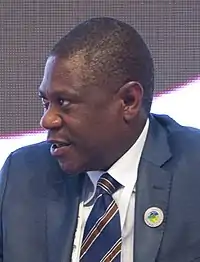
.jpg.webp)

.jpg.webp)
.jpg.webp)
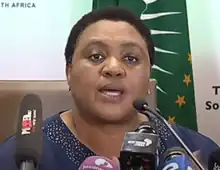


.jpg.webp)
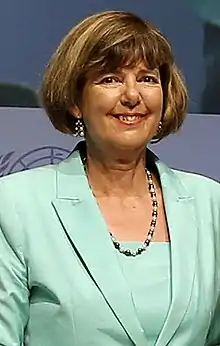

.jpg.webp)
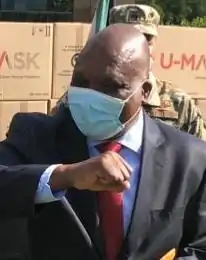

.jpg.webp)

_(cropped).jpg.webp)
.jpg.webp)



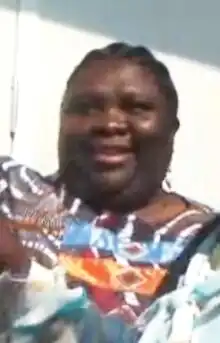
_(cropped).jpg.webp)
.jpg.webp)

